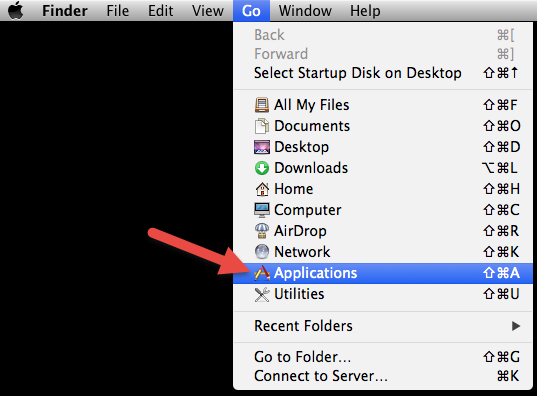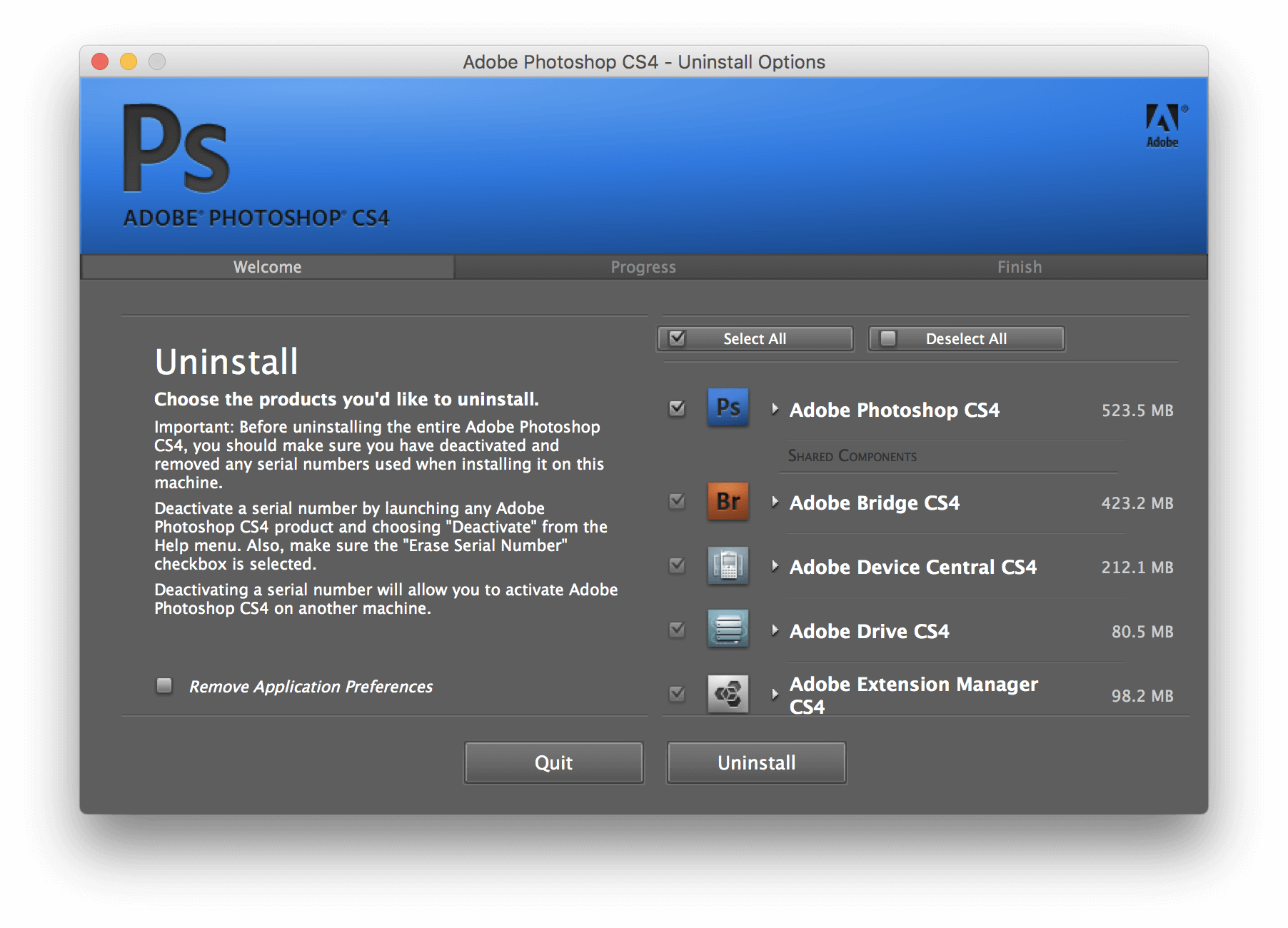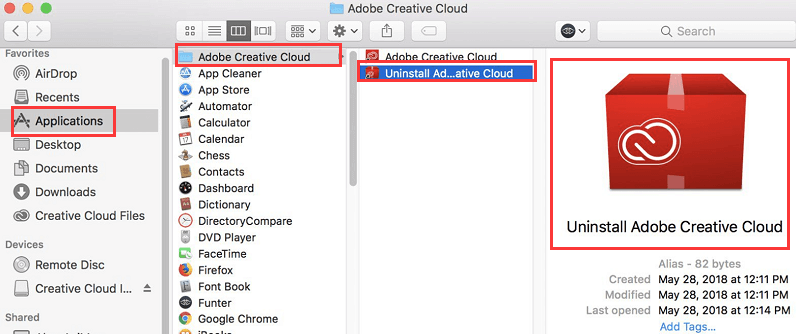Choose Window Downloads to view the downloaded uninstaller. Save the uninstaller file in a convenient location. To open the uninstaller, double-click it in the Downloads window. To run the uninstaller, double-click the Uninstaller icon in the window. Locate Adobe Flash Player Install Manager on your Mac. From the Menu bar at the top of the screen, click on Go and select Utilities. If you can’t find Utilities, it also appears in the Application folder. In the Utilities folder, find and double click on the Adobe Flash Player Install Manager application.
- Mac Uninstaller Program
- Adobe Uninstaller For Mac
- Software Uninstaller Mac
- Adobe Reader Uninstaller Tool
Adobe Creative Cloud (CC) is a collection of 20+ desktop and mobile apps like Premiere Pro, Photoshop, Acrobat, Illustrator, and more. It’s a useful set of tools that are industry standards for creatives worldwide.
Still, you may need to uninstall the CC Suite from your Mac for some reason. Dragging the app icon to the Trash is insufficient. Today, we’ll show you how to do that in the most effective way possible.
Note
Make sure you’ve already synced all your files to your Creative Cloud account before proceeding to uninstallation. You might lose files that are not synced.
How to remove Adobe Creative Cloud from Mac manually
First, you need to quit Adobe CC and all related processes. To do this:
- Go to the Applications folder > Utilities > Activity Monitor. You can also launch Activity Monitor using Spotlight.
- Search for any processes associated with the Creative Cloud.
- Select them and hit the Force Quit button.
- Press Quit in the pop-up window to confirm the action.
Next, remove all CC-related apps (Photoshop, Lightroom, InDesign, Illustrator, etc.) from your system. Otherwise, you won’t be able to uninstall the Creative Cloud desktop app. So, to avoid seeing see this warning:

… follow these steps:
- Open the Adobe Creative Cloud app.
- Go to the App tab and search for apps installed on your Mac.
- Click the More Actions icon next to the app you want to uninstall.
- Choose Uninstall.
- Follow the onscreen instructions.
Now, you’re ready to get rid of the desktop app. To eliminate all CC components, Adobe recommends uninstalling it with a special uninstaller. Here’s how to use it:
- Go to Applications > Adobe Creative Cloud.
- Launch the Creative Cloud Uninstaller.
- Enter your administrative password when required and press OK.
- Hit Uninstall to kickstart the process.
- Click Close when the confirmation message appears. Done!
Can’t find the Creative Cloud Uninstaller on your Mac? Receiving error alerts when deleting the app with its help? The solution is to download the latest version of the CC uninstallation tool on helpx.adobe.com.
Mac Uninstaller Program
Once you download the ZIP file, extract it, and open the uninstaller.

Depending on your security settings, you may receive an alert asking, “Are you sure you want to open it?”.
Click Open to continue. Follow the onscreen instruction to complete the process.
Finally, you need to get rid of CC leftovers. The problem is that the dedicated Adobe tool doesn’t actually remove all traces of the app from your Mac. Some components may still hide behind your system files and folders. To find and trash the remains:
- Select Go to Folder from the Go menu in the Finder.
- Paste
~/Libraryinto the box that appears and hit Go. - Look for any Adobe-related files in the folder and trash them.
- Repeat steps 2 and 3 for the following locations:

~/Library/Application Support
~/Library/Preferences
/Library/LaunchAgents

/Library/LaunchDaemons
/Library/PrivilegedHelperTools
Note
Be careful not to remove files and folders vital for computer performance. A tiny mistake may cost you a system crash.
Once you’ve finished cleaning out the system folders, empty the Trash to complete the uninstallation. Now, Adobe CC should be fully removed. Looks like a lot of work, right? Luckily, there is a much faster and less risky way to uninstall it on your Mac.
How to completely uninstall Adobe Creative Cloud
If you want to remove CC, all Adobe-related apps, and leftovers with one shot, using a third-party uninstaller is a way to go. The excellent option is CleanMyMac X, which is a feature-packed tool with a user-friendly interface. It also works flawlessly as a junk cleaner, malware remover, and system optimizer.
Here’s how to force uninstall Adobe Creative Cloud with its help:
- Grab your copy of CleanMyMac X (trial version available).
- Install and launch it.
- Navigate to the Uninstaller tab.
- Check all CC-related apps and press Uninstall.
Congrats! Now, you’ve deleted Adobe Creative Cloud and its components for good.
Adobe Uninstaller For Mac
If your reason for uninstalling is because CC’s causing issues for your Mac, you can try to reset it. Resetting means that you get all the app’s preferences and settings back to its default condition. You force it to start again as it had just been downloaded.
Software Uninstaller Mac
Here’s when Uninstaller from CleanMyMac X comes in handy again. Check the Creative Cloud in the list of the apps and choose Reset instead of Uninstall in the drop-down menu. Hit the Reset button. That’s all!
Adobe Reader Uninstaller Tool
Deleting or resetting Adobe Creative Cloud is a piece of cake, especially if you have tools like CleanMyMac X at hand. But if you want to cope with this task manually, follow the steps above.
